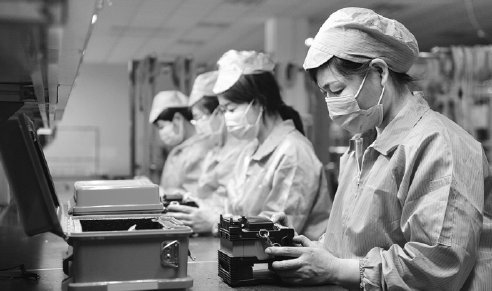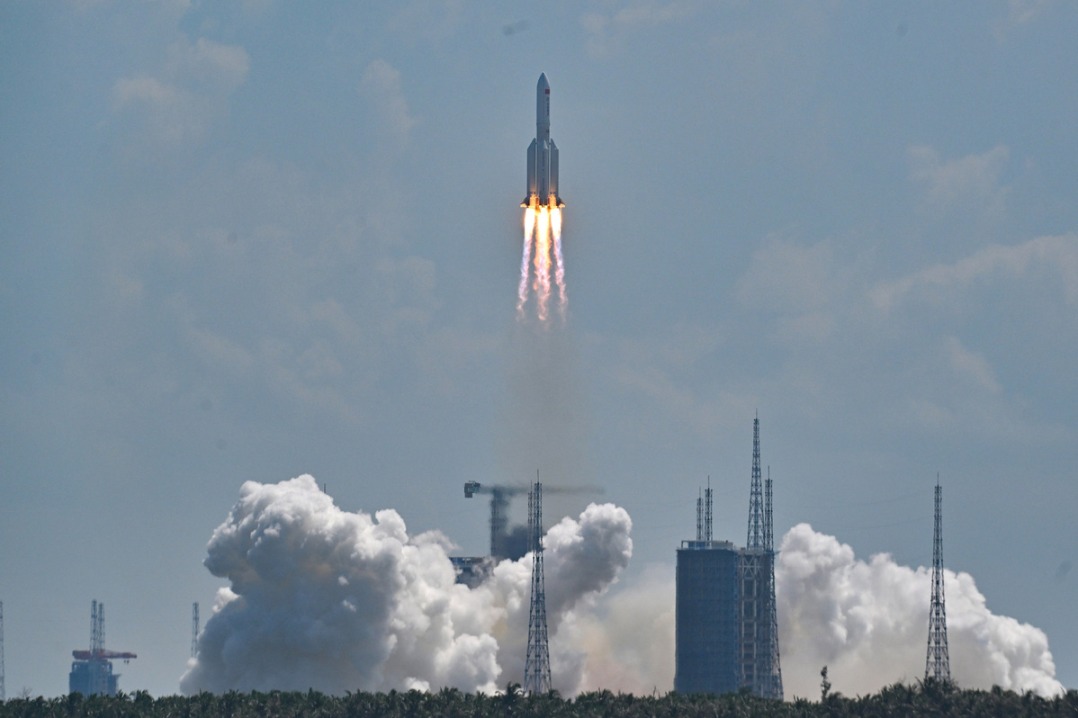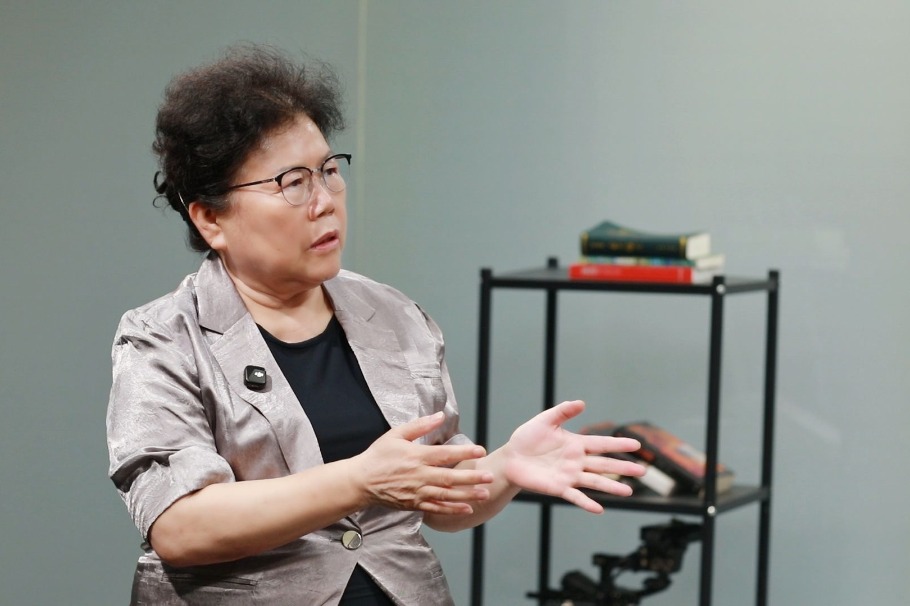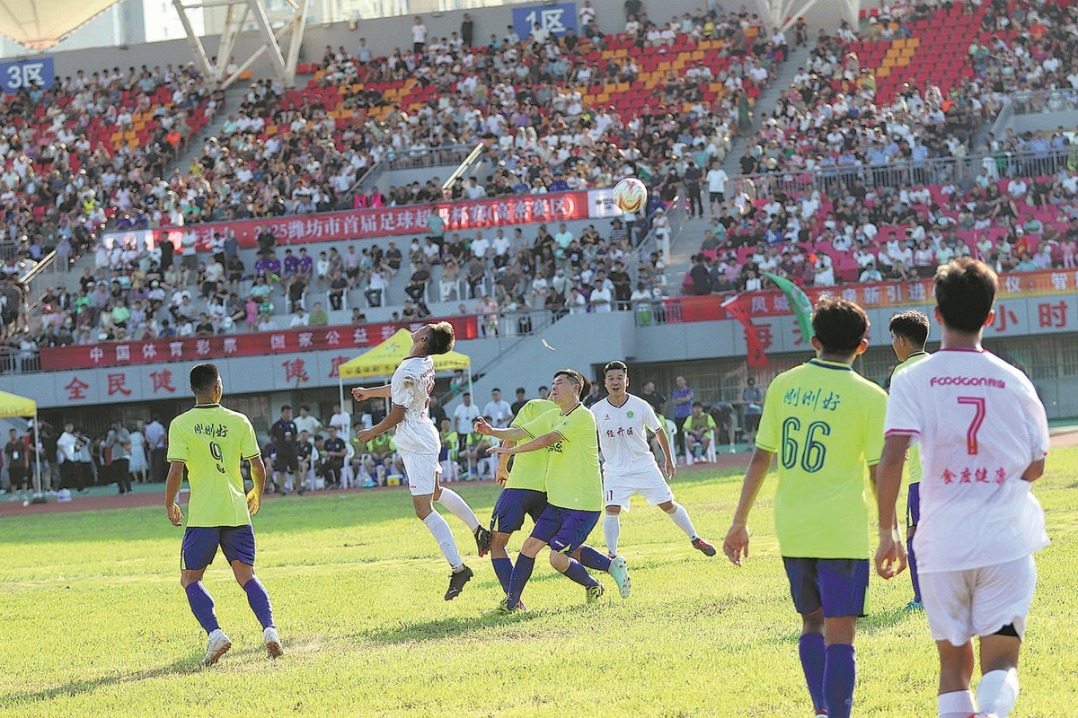Insufficient demand now biggest challenge facing business vitality

The recovery of the Chinese economy from the COVID-19 pandemic has entered a new stage as boosting market demand has replaced supply-side support as the top policy priority.
As the government pushes business resumption and policy assistance to help market entities overcome difficulties, China's economy has rebounded at a faster-than-expected speed from the impact of the novel coronavirus contagion.
More than 99 percent of large enterprises and projects had resumed operations as of the beginning of June. About 91 percent of small and medium-sized enterprises had also resumed business activities as of late May, said the Ministry of Industry and Information Technology.
Industrial output increased by 4.4 percent year-on-year in May, close to the 5 percent seen a year earlier, while the service production index returned to positive territory in May for the first time since the outbreak of the contagion, up 1 percent on a yearly basis.
However, despite the rally in economic indicators, they have not reached pre-pandemic levels. As for capacity utilization, 15 percent of industrial firms and 30 percent of service providers above a designated scale operated at less than half of capacity as of late May.
The recovery in capacity utilization of many service providers has basically come to a standstill due to the lack of market demand.
Behind this phenomenon is the problem that as supply-side indicators recovered briskly under administrative pushes for work resumption, the restoration of demand has lagged behind. The gap between supply and demand has not narrowed but has instead continuously expanded amid the return of economic activity.
The nominal GDP growth rate for May was a 2.2 percent year-on-year when calculated by supply-side indicators, but a negative 1.6 percent when calculated by demand-side indicators.
The difference between the nominal economic growth rate based on supply versus demand was hence 3.8 percentage points in May. By contrast, the difference was only 1.7 percentage points in April and 1 percentage point in the first quarter.
In other words, the difference has expanded as the resumption of work and business deepened. This is because the policy package aimed at keeping enterprises afloat has shielded the fundamentals of production from systemic damage during the economic standstill and therefore led to a rebound in supply capacity.
Demand, however, has been systemically hurt by the uncertainties surrounding the pandemic, the decline in personal income and other factors. Such damage is hard to overcome in a short period, even with policy assistance.
The business resumption rate of over 90 percent and the expanding gap between supply and demand indicate that the government-led economic activity restoration has essentially run its course.
Sticking to the old path could result in a new round of shutdowns and even layoffs as the supply-demand gap is further enlarged. Capacity utilization can only be raised sustainably when there is adequate market demand.
Therefore, China's economic recovery has entered a new stage where insufficient demand is now the biggest challenge facing economic vitality.
The country also faces the risk of deflation amid weak demand.
Particularly, the year-on-year growth in the producer price index-the gauge of factory-gate prices-h(huán)as been on a downward trajectory for four months in a row and was deeply in negative territory of-3.7 percent in May. All this showed that depression may have occurred in the industrial sector.
Meanwhile, the core consumer price index-which excludes food and energy prices-grew by less than 1.5 percent year-on-year for four consecutive months and stood at only 1.1 percent in May, pointing to insufficient aggregate demand.
Shriveling external demand could put further pressure on overall demand. China's exports registered growth on a yearly basis in April and May. But the impact from the deteriorating external environment on overall demand has just begun to manifest itself.
The downside pressure on external demand may become full-blown in the third quarter as it takes time for the global pandemic to translate into shocks on trade flows.
Both microeconomic surveys and macroeconomic leading indicators revealed that China's export orders may face a substantial drop from the end of the second quarter and into the third quarter.
In the face of anemic demand, China must switch the main task from government-driven work resumption to rapidly expanding effective demand in order to narrow the supply-demand gap. The expansion of demand should outpace that of supply.
This means that on top of providing subsidies for medium, small, and micro businesses, the government should step up efforts to facilitate expansion of investment and consumption demand.
For instance, part of the bailouts for producers can instead be government procurements or other types of assistance to light a fire under new orders. Assistance for small enterprises is still important, but the authorities must be vigilant against excessive credit expansion.
In short, demand-side stimulus must outweigh supply-side assistance as China steps into the new phase of economic recovery. The rally in production is now driven by market demand instead of government encouragement.
Measures to boost market demand will rebalance supply and demand, prevent the supply-demand gap from causing business closures and act as a safety valve against further deterioration in external demand.

The author is vice-president of Renmin University of China.
Today's Top News
- Momentum builds in A-share market
- China stands firm against maritime intrusions by US, Philippine vessels
- Games souvenirs fostering friendships
- Xi's ecological vision provides?global solutions
- US annual human rights circus show exposes its hypocrisy and political bias
- New market entity data show vitality































